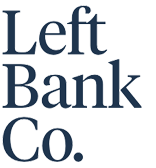Journal
Our little corner of the internet where we share big ideas, thoughts and musings on city living, making and exploring.

This fifth installment of ‘Meet the Thinker’, we introduce a giant of cultural placemaking Tim is someone who is always blazing a trail and thinking of ways of improving approaches to embedding culture in our cities.
This fourth instalment of ‘meet the thinker’ looks at Quebec’s cultural powerhouse through the expert eyes of local creative space advocate Mélanie Courtois.
It’s on everyone’s lips in the cultural and tourism sector. Immersive experiences are popping up everywhere and, in the process, redefining a new frontier of creative practice and showcasing an expanded language of audience engagement.
Our third thinker of this series is Kate Spencer. Kate currently holds a number of positions including Development Partner at FORWARD, The Centre for Future Skills and Workforce Transformation at RMIT University in Melbourne. She is also a creative producer planning and delivering creative placemaking at Fishermans Bend, one of Melbourne’s largest urban renewal areas with an aim to develop connections within community.
In Left Bank Co.’s second Meet the Thinker, we’re meeting another remarkable woman whose career as a creative, grant-maker and agent for change is hard to surpass. Moy Eng, the outgoing CEO of the Community Arts Stabilization Trust in San Francisco reflects back on ten years since this innovative property ownership vehicle was created and the impact it has made on the affordability of creative workspace in a very unaffordable city like San Francisco.
Oftentimes we see recurring themes appear across multiple projects and cities. Lately we’ve spent a lot of time thinking about and working on light-touch reuse of significant heritage assets.
In Left Bank Co’s inaugural Meet the Thinker, we’re speaking with Dr Rhian Scott. Rhian is a human geographer and postdoctoral research fellow based at King's College in London where she conducts research into the challenges and opportunities of affordable creative infrastructure provision in cities. For those of you who know Left Bank Co well, you will know these are issues close to our heart!
October 2021 marked the end of almost four months of lockdown in Sydney, and saw Melbourne exit its never-ending cycle of restrictions that won it the moniker of the world’s most locked down city. While many are jubilant at the idea of being able to resume their lives, others remain cautiously optimistic about what a future living with COVID-19 holds. This article explores how we can rewire the city to make it more interesting to more people, more of the time.
At Left Bank Co., we believe the concept of placemaking as an act of curation of public space needs a fundamental rethink, and now is the time to do just that. While activation programs, temporary projects and pop-up installations have their role to play, they are also reliant on expiring budgets and capped resources, and can also become triggers for gentrification.










